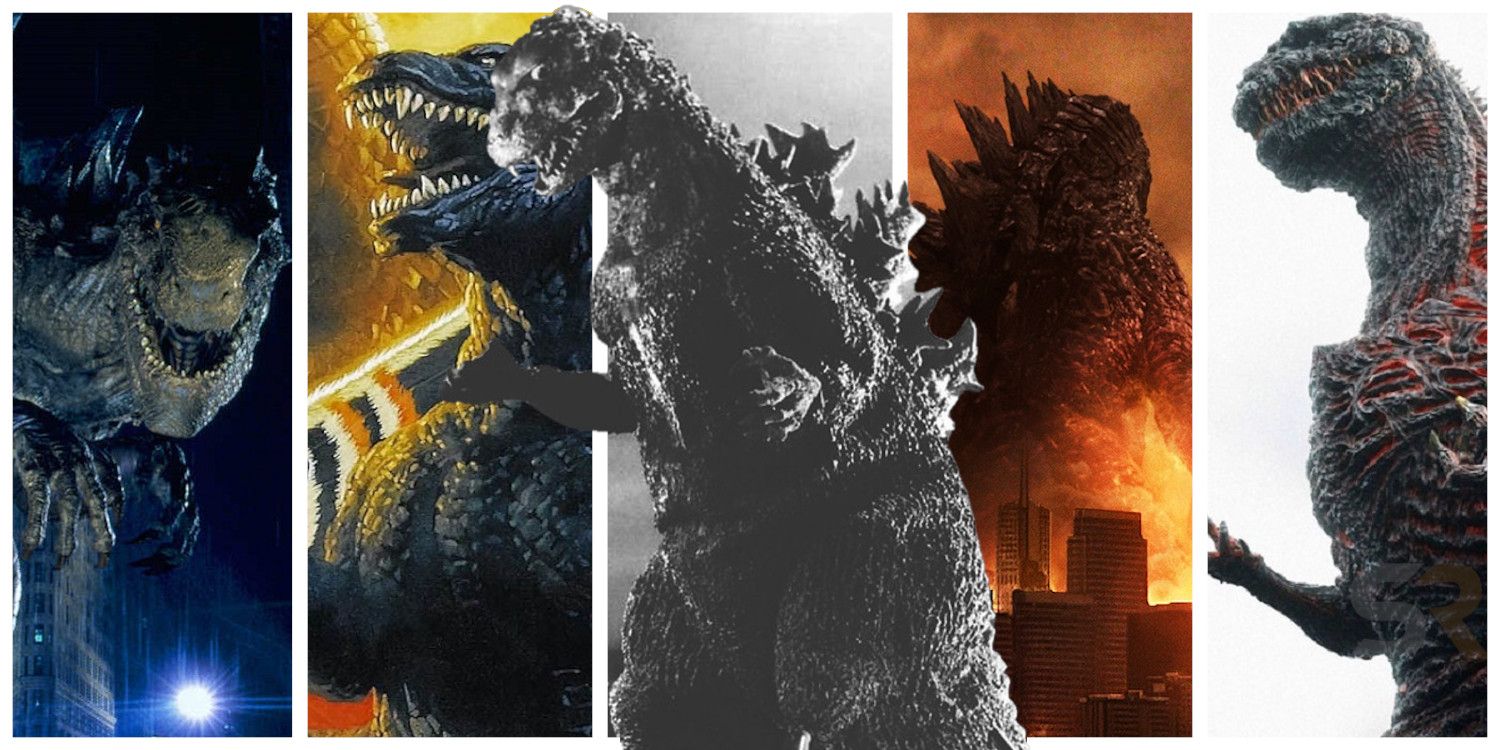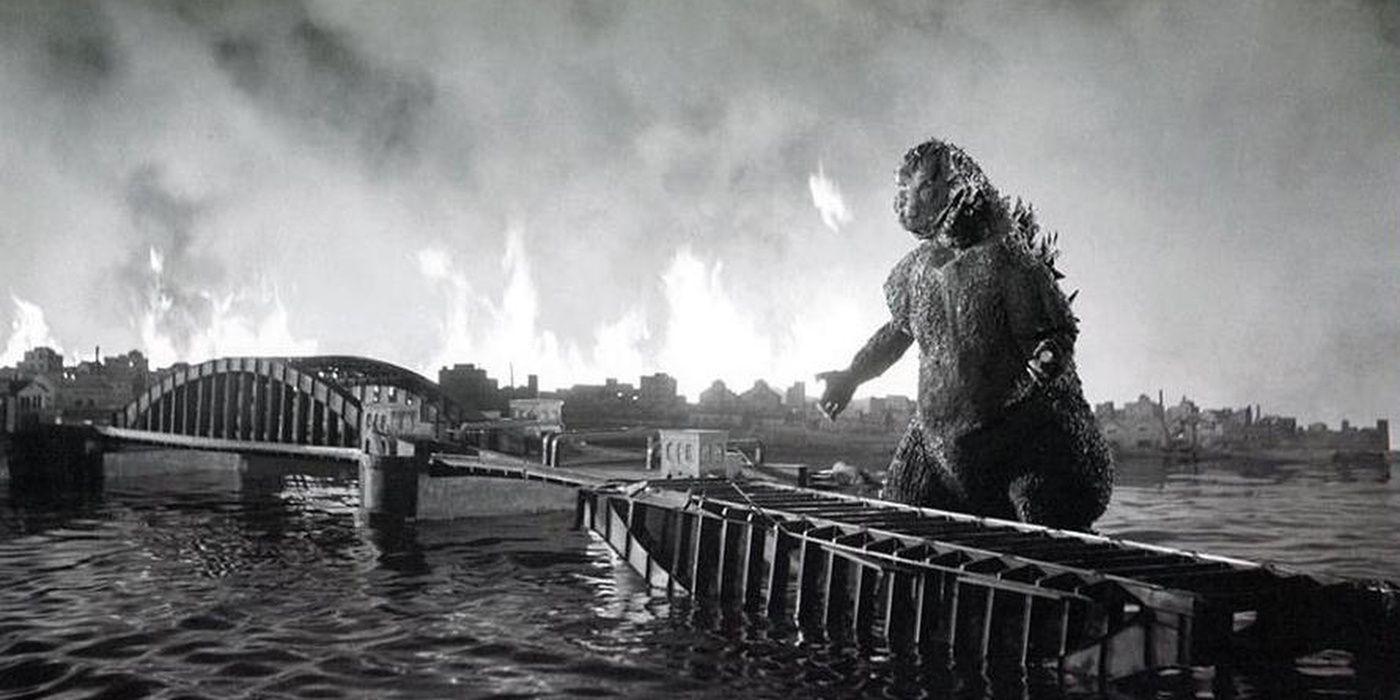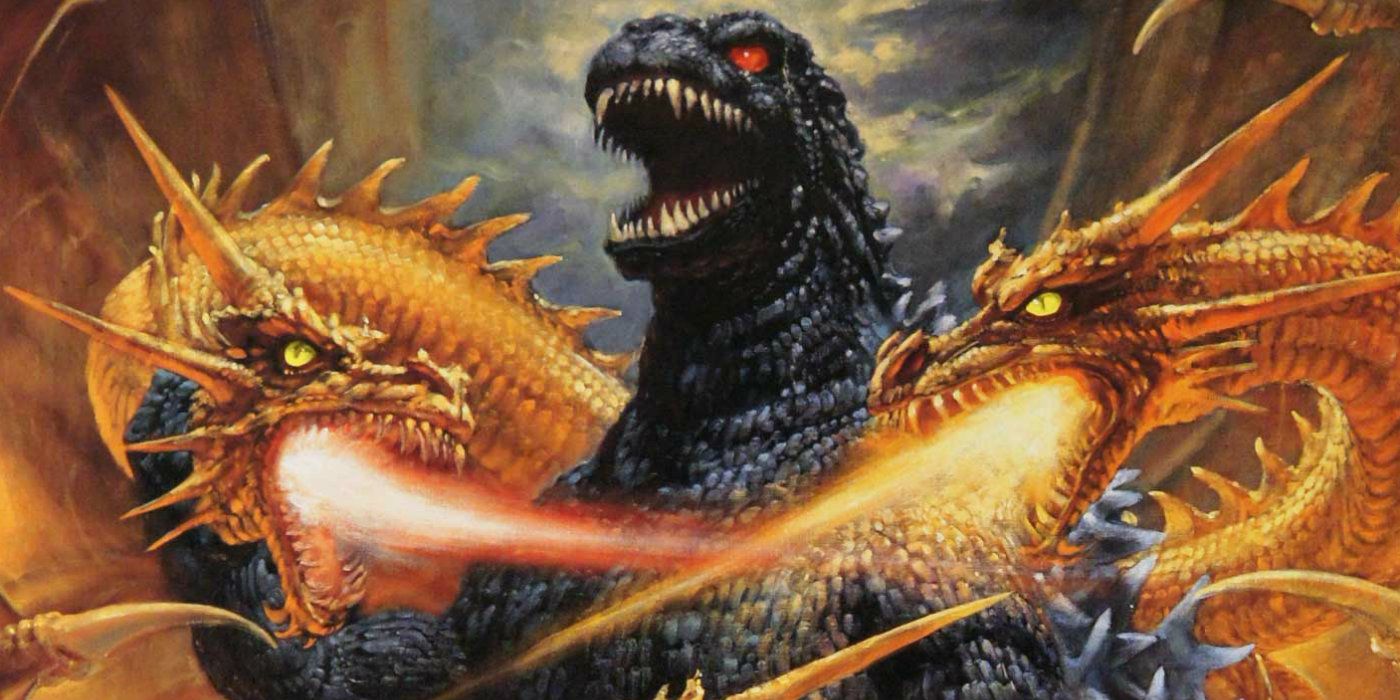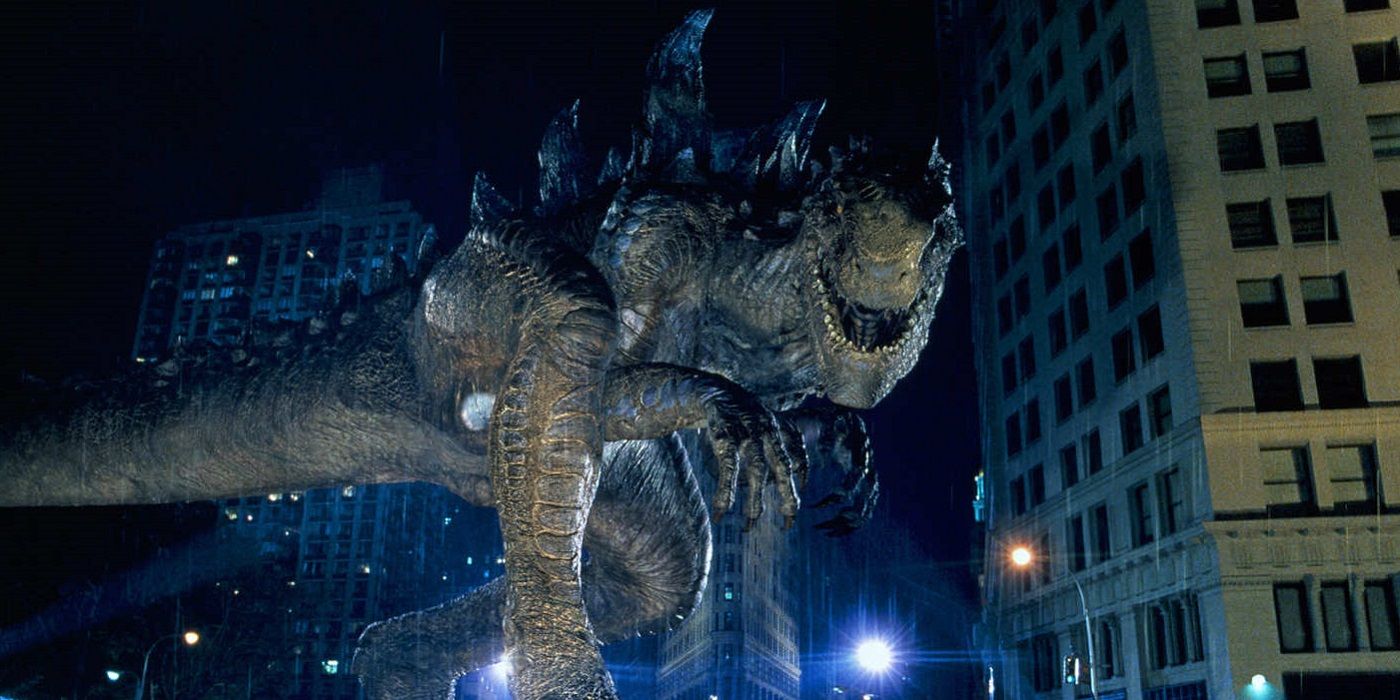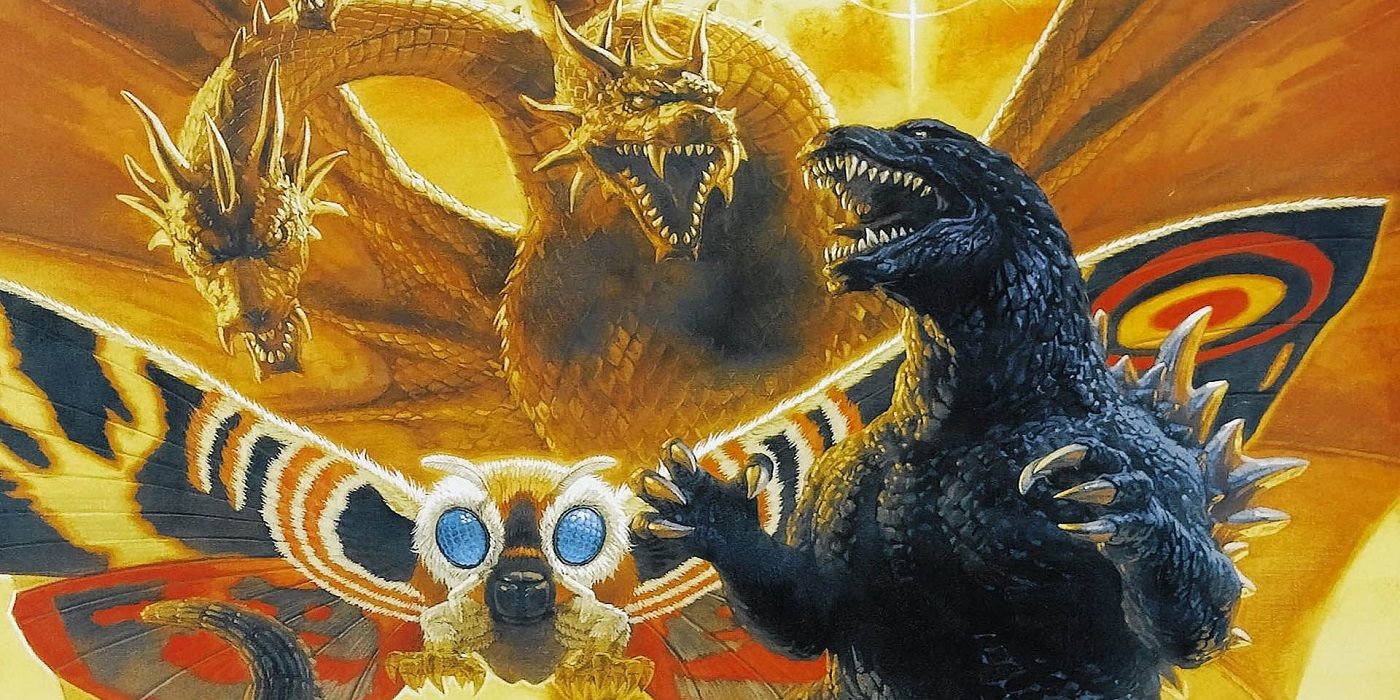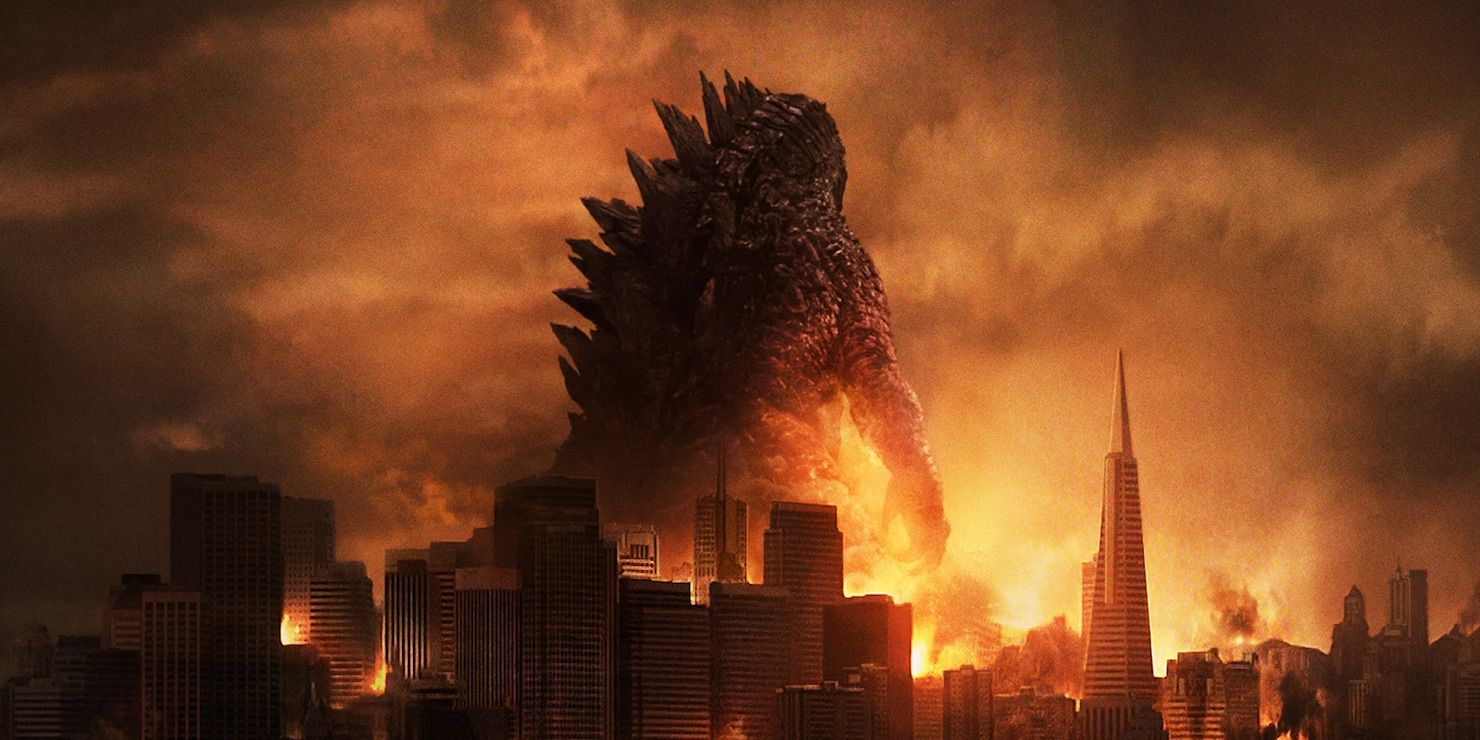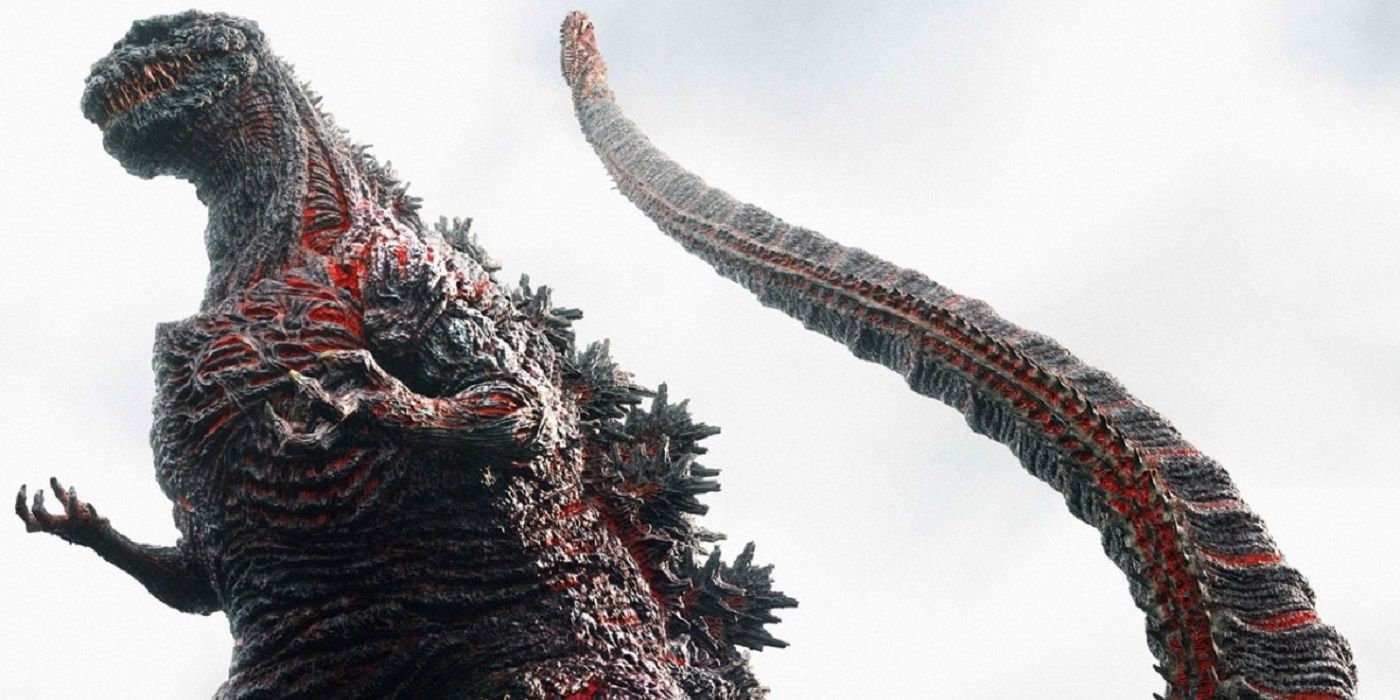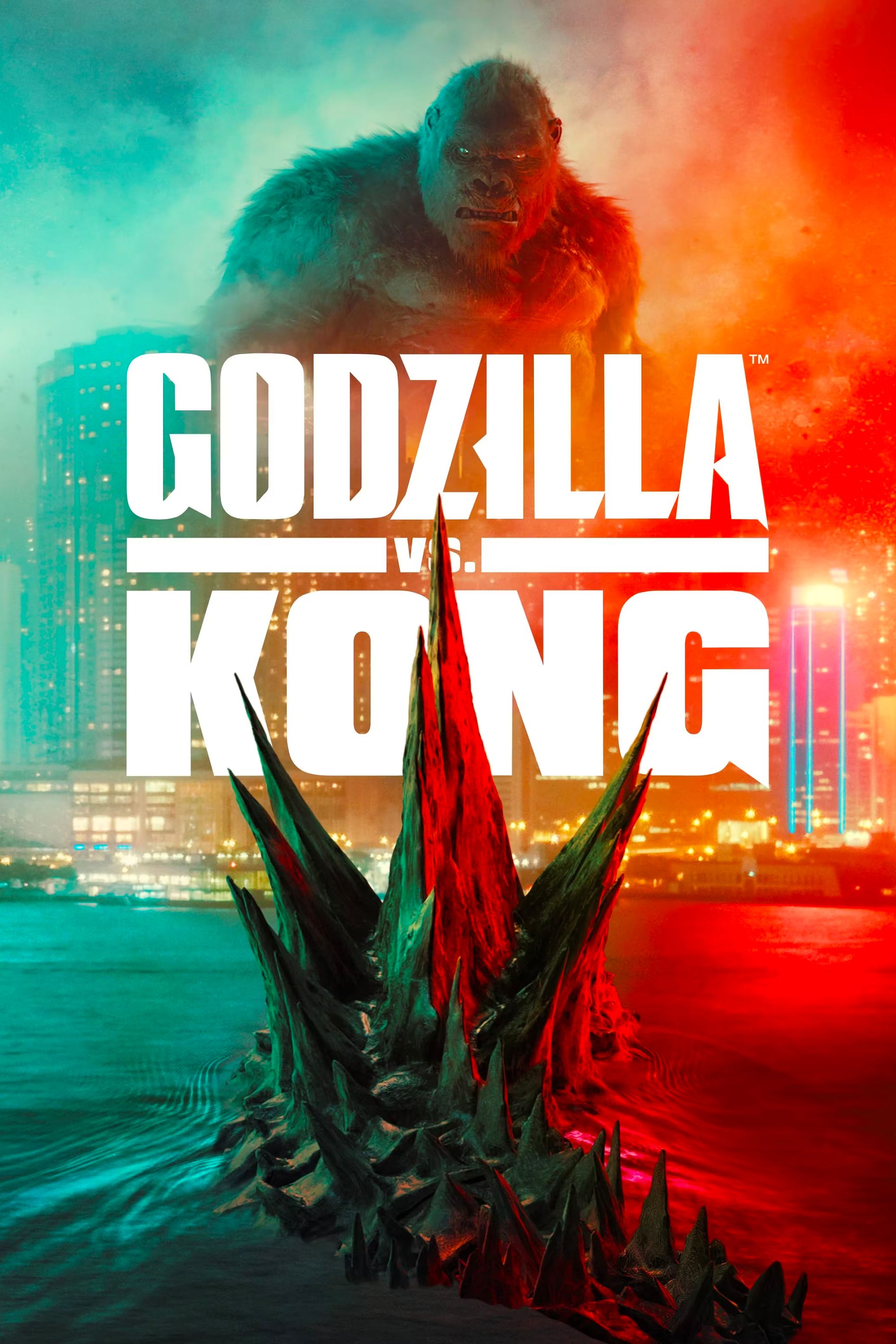Godzilla is known as the unintentional byproduct of nuclear testing in the 1950s, but this isn't the only version of Godzilla's origin. Over the last six decades, there have been multiple iterations of the Japanese pop culture icon, and not all of them have the same origin story.
Godzilla has starred in 32 live-action movies (including the 1998 American adaptation). For the most part, Toho's Godzilla franchise can be broken up into three different eras: Showa (1954-1975), Heisei (1984-1995), and Millennium (2000-2004). Each series of movies had its own version of the King of the Monsters, all with their own slightly unique designs. The 1990s Godzilla, for instance, was designed to be scarier than the Showa series Godzilla, while the monster introduced in Godzilla 2000 had purple back spikes and red atomic breath. Other interpretations of Godzilla's story have been told as well, and they all provide their own take on the beloved character.
Most Godzilla movies only make minor alterations to Godzilla, as there are certain endearing aspects of the character that are kept constant. Godzilla is typically portrayed as a nearly unstoppable force that lives in the depths of the ocean near Japan. Godzilla can usually be recognized by his dinosaur-like appearance, iconic roar, and blue atomic breath. How Godzilla became so powerful is traditionally associated with nuclear weapons, but not every version of Godzilla was created in the same way. Here's every origin story the King of the Monsters has had in the movies.
Godzilla (1954)
Godzilla exists as a metaphor of the pain and destruction caused by the atomic bombs that were dropped on Nagaski and Hiroshima during World War II. In the Japanese 1954 film, Godzilla, it was explained that the monster was a prehistoric reptile of some sort who was mutated by radiation from a nuclear test conducted by the United States military in the Pacific Ocean. The large amount of radiation absorbed by the reptile caused it to grow to gigantic proportions. Named "Godzilla," the creature attacked Japan but was ultimately killed by a device called the Oxygen Destroyer. The sequel, Godzilla Raids Again, revealed that two of these reptilian creatures were actually impacted by the atom bomb test. The first was killed in 1954, but the second survived. This version of Godzilla returned in the Toho films that followed.
Godzilla vs. King Ghidorah (1991)
Godzilla vs. King Ghidorah, the third installment in the Heisei series of Godzilla films, expanded on his classic origin story by diving deeper than ever into the incident that created him. It was revealed that on an island in 1944, a group of Japanese soldiers encountered a dinosaur who rescued them from the U.S. military. It was believed that the creature - who was given the name "Godzillasaurus" - was the same reptile that was transformed by the atom bomb test into Godzilla.
A team of aliens used time travel to go back to 1944 and erase Godzilla from existence. They moved the Godzillasaurus to a different location, that way he wouldn't be affected by the radiation. The aliens swapped Godzilla with three small creatures who were mutated into King Ghidorah. Later, the Japanese decided that Godzilla's existence was necessary to beat Ghidorah, so they decided to find the Godzillasaurus and hit him with enough radiation to recreate his original transformation. To make this happen, they bombarded him with radiation, unaware that in the 1970s, the Godzillasaurus found a sunken, Russian nuclear submarine and had already been mutating as a result. Getting hit with a second, even bigger dose of radiation made Godzilla more powerful than he ever was before.
Godzilla (1998)
Sony's universally criticized adaptation of Godzilla in 1998 offered a drastically different interpretation of the monster. This version of Godzilla was born when an iguana was caught in a nuclear test in Polynesia in 1968. The radiation in his body led to a slow evolution into the lizard-like creature seen running loose in New York City during the events of the film. The transformation occurred over a 30-year period. As this version of Godzilla was poorly-received by audiences (and Toho), Toho effectively retconned him into a different monster by having him face off against the real Godzilla in Godzilla: Final Wars.
Godzilla, Mothra, and King Ghidorah: Giant Monsters All-Out Attack (2001)
Godzilla, Mothra, and King Ghidorah: Giant Monsters All-Out Attack stands out as a movie where Godzilla is a truly evil, supernatural entity. It also exists in a separate continuity from all other Godzilla films, but does act as a continuation of the 1954 movie. In the film, Godzilla was indeed killed by the Oxygen Destroyer in 1954, but his body wasn't destroyed. It became possessed by the souls of the people who died in the Pacific Ocean during World War II.
Godzilla (2014)
Legendary's Godzilla kept the connection to the nuclear incident of 1954, but altered the circumstances of the event and what it meant for Godzilla. It was mentioned in the 2014 Godzilla that the military's "test" in 1954 was actually an attempt to kill Godzilla, an ancient creature that had lived for thousands of years. Godzilla survived the nuclear bombs, however, and returned in 2014 to battle the M.U.T.O.s. The MonsterVerse completely changed the meaning of Godzilla by making him a force of nature, rather than a product of humanity's mistakes.
In the MonsterVerse, Godzilla is one of several Titans, enormous creatures who feed off of radiation. Most of them hibernate deep within the Earth and in hidden underground tunnels called the Hollow Earth. Godzilla (the last known member of his species) exists to preserve the balance of nature by protecting the planet from threats like Ghidorah.
Shin Godzilla (2016)
Toho's Shin Godzilla rebooted the franchise and served as the biggest deviation from the traditional story ever produced by the studio. The monster depicted in Shin Godzilla was a villainous, grotesque beast that possessed a number of brand new abilities. Originally a prehistoric sea-dwelling animal, it was somehow exposed to nuclear waste in the ocean, leading it to mutate into a strange, eel-like creature. It went through several hideous forms before finally evolving into a monster with the distinguishing physical characteristics of Godzilla. In its first two forms, it didn't even have legs.
This is without a doubt the most unusual portrayal of Godzilla in a Toho film - but it won't be seen again. Toho does have plans to move forward with the Godzilla franchise, but the next installment will be yet another reboot. When that happens, Toho may introduce a new take on Godzilla, complete with a new origin.

